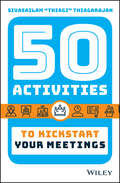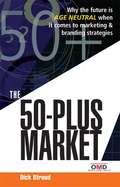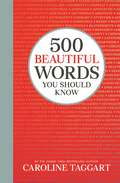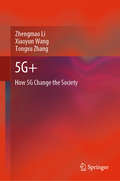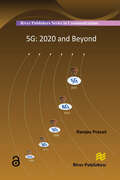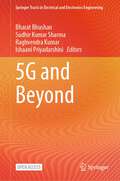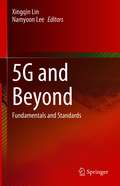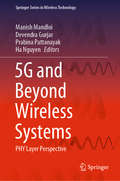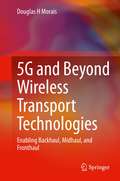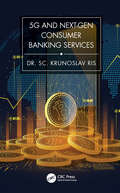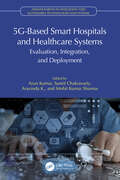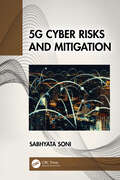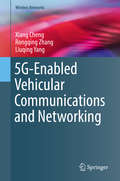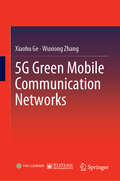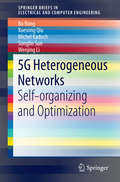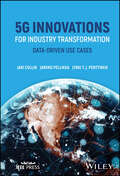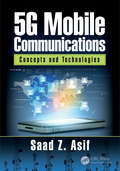- Table View
- List View
50 Activities to Kickstart Your Meetings
by Sivasailam ThiagarajanInfuse creativity, collaboration, and optimism into every meeting Dr. Sivasailam "Thiagi" Thiagarajan is an internationally recognized expert in effective group communication. He is known for engaging diverse participants at some of the world's leading organizations. In 50 Activities to Kickstart Your Meetings, Thiagi reveals his most effective "Group Performance Support" tools—tried and tested activities that will get your meeting participants thinking, talking, and collaborating like never before. We aren't born knowing how to lead and participate effectively in meetings. Our meeting participants want to engage and generate results just as much as we do—but first we need to teach them how. This book's enjoyable activities will help people reach their collaborative potential, and they'll have fun doing it! Whether you are facilitating meetings with 2 people or 200 people (or more!), and whether you have 2 minutes or 2 hours to fill, this book has an activity to fit. Get your participants engaged and turn them into active stakeholders in all aspects of the meeting process—from morale building and inclusivity to more productive discussions and creative collaboration, 50 Activities to Kickstart Your Meetings covers it all. An indispensable resource for anyone who wants to transform meetings into engines of creativity and growth!
50 Activities to Kickstart Your Meetings
by Sivasailam ThiagarajanInfuse creativity, collaboration, and optimism into every meeting Dr. Sivasailam "Thiagi" Thiagarajan is an internationally recognized expert in effective group communication. He is known for engaging diverse participants at some of the world's leading organizations. In 50 Activities to Kickstart Your Meetings, Thiagi reveals his most effective "Group Performance Support" tools—tried and tested activities that will get your meeting participants thinking, talking, and collaborating like never before. We aren't born knowing how to lead and participate effectively in meetings. Our meeting participants want to engage and generate results just as much as we do—but first we need to teach them how. This book's enjoyable activities will help people reach their collaborative potential, and they'll have fun doing it! Whether you are facilitating meetings with 2 people or 200 people (or more!), and whether you have 2 minutes or 2 hours to fill, this book has an activity to fit. Get your participants engaged and turn them into active stakeholders in all aspects of the meeting process—from morale building and inclusivity to more productive discussions and creative collaboration, 50 Activities to Kickstart Your Meetings covers it all. An indispensable resource for anyone who wants to transform meetings into engines of creativity and growth!
The 50-Plus Market: Why the Future is Age-Neutral When it Comes to Marketing and Branding Strategies (1st edition) (PDF)
by Dick StroudChallenging marketing's core assumptions about the effects of ageing on consumer behaviour, The 50 Plus Market provides a fresh approach to the way companies interact with their older customers. It explains how the principles of age-neutral marketing will ensure companies capture the vast expenditure generated by this affluent group.This compelling book analyses all aspects of marketing to this age group. Supported by research from OMD, one of the largest and most influential media communications specialists in the world, The 50 Plus Market is essential reading for those wishing to refine their marketing strategies.
500 Beautiful Words You Should Know
by Caroline TaggartCRESTFALLEN at CHICANERY and CIRCUMLOCUTION? Have no TRUCK with TOMFOOLERY and TRUMPERY? Or OMNISCIENT about OBLOQUIES and OPSIMATHS?Whether you’ve answered yes, no or ‘sorry, I didn’t catch that’, 500 Beautiful Words You Should now is for you. It offers words that flow EXQUISITELY off the tongue; words that are just perfect for their meaning, like the lazy-sounding SLOTH and the heavy-footed GALUMPH; words that will make you sound clever, like DEUTERAGONIST and LETHOLOGICA; and words that are just fun to say, like LIQUEFACTION and LUXURIATE.It’ll tell you where they come from, how to use them and whether you’re likely to BAMBOOZLE anyone who’s listening to you. With occasional special features on great words for colours, words from the Classics and words that make you laugh, this is a book to delight BIBLIOPHILES and BLATHERSKITES alike.
500 Common Chinese Proverbs and Colloquial Expressions: An Annotated Frequency Dictionary
by Liwei Jiao Benjamin Stone500 Common Chinese Proverbs and Colloquial Expressions is a dictionary of key Chinese proverbs or suyu. Suyu are vivid and colourful expressions widely used in Chinese language. The smooth use of chengyu in Chinese writing and of suyu in spoken Chinese not only makes communication more effective, it is also an indicator of mastery of the language. This dictionary will provide an ideal resource for all intermediate to advanced learners of Chinese. Concise and practical, it draws upon a large corpus of authentic language data to present 500 of the most commonly used Chinese suyu. The suyu are listed and organised according to their frequency, enabling easy and convenient access for the reader. Each proverb listing: is given in both simplified and traditional characters offers an English translation, followed by English equivalents is followed by two examples, written in Chinese, Pinyin and English, plus explanations and usage notes. Examples are given in the form of dialogues reflecting typical situations, and helpful cultural annotations are provided throughout. A Pinyin index, a stroke index and a Chinese word index are presented at the back of the book and accompanying audio is also available for free download at www.routledge.com/9780415501491. Recorded by native speakers and covering the whole range of proverbs, expressions and example sentences featured in the book, this invaluable resource will help students to build up strong comprehension and communication skills. This dictionary is suitable both for class use and independent study and will be of keen interest to students and teachers of Chinese alike.
500 Common Chinese Proverbs and Colloquial Expressions: An Annotated Frequency Dictionary
by Liwei Jiao Benjamin Stone500 Common Chinese Proverbs and Colloquial Expressions is a dictionary of key Chinese proverbs or suyu. Suyu are vivid and colourful expressions widely used in Chinese language. The smooth use of chengyu in Chinese writing and of suyu in spoken Chinese not only makes communication more effective, it is also an indicator of mastery of the language. This dictionary will provide an ideal resource for all intermediate to advanced learners of Chinese. Concise and practical, it draws upon a large corpus of authentic language data to present 500 of the most commonly used Chinese suyu. The suyu are listed and organised according to their frequency, enabling easy and convenient access for the reader. Each proverb listing: is given in both simplified and traditional characters offers an English translation, followed by English equivalents is followed by two examples, written in Chinese, Pinyin and English, plus explanations and usage notes. Examples are given in the form of dialogues reflecting typical situations, and helpful cultural annotations are provided throughout. A Pinyin index, a stroke index and a Chinese word index are presented at the back of the book and accompanying audio is also available for free download at www.routledge.com/9780415501491. Recorded by native speakers and covering the whole range of proverbs, expressions and example sentences featured in the book, this invaluable resource will help students to build up strong comprehension and communication skills. This dictionary is suitable both for class use and independent study and will be of keen interest to students and teachers of Chinese alike.
5G+: How 5G Change the Society
by Zhengmao Li Xiaoyun Wang Tongxu ZhangThis book takes China Mobile's "5G +" plan as the mainline, introduces three major scenarios, nine indicators, system architecture and basic principles of 5G, and systematically explains the essence of China Mobile's "5G +" for the first time. A lot of industry use cases and solutions are introduced for 5G to bring new changes to life, industries, and social governance. This book can benefit all readers who are interested in 5G. It also can be a reference for vertical industry partners to fully understand the possible applications of 5G. Most of all, it will help to promote all industries with new developments based on 5G's new kinetic energy.
5G: 2020 and Beyond
by Ramjee PrasadThe future society would be ushered in a new communication era with the emergence of 5G. 5G would be significantly different, especially, in terms of architecture and operation in comparison with the previous communication generations (4G, 3G...). This book discusses the various aspects of the architecture, operation, possible challenges, and mechanisms to overcome them. Further, it supports users? interac- tion through communication devices relying on Human Bond Communication and COmmunication-NAvigation- SENsing- SErvices (CONASENSE).Topics broadly covered in this book are; • Wireless Innovative System for Dynamically Operating Mega Communications (WISDOM)• Millimeter Waves and Spectrum Management• Cyber Security• Device to Device Communication
5G: 2020 and Beyond
by Ramjee PrasadThe future society would be ushered in a new communication era with the emergence of 5G. 5G would be significantly different, especially, in terms of architecture and operation in comparison with the previous communication generations (4G, 3G...). This book discusses the various aspects of the architecture, operation, possible challenges, and mechanisms to overcome them. Further, it supports users? interac- tion through communication devices relying on Human Bond Communication and COmmunication-NAvigation- SENsing- SErvices (CONASENSE).Topics broadly covered in this book are; • Wireless Innovative System for Dynamically Operating Mega Communications (WISDOM)• Millimeter Waves and Spectrum Management• Cyber Security• Device to Device Communication
5G and Beyond (Springer Tracts in Electrical and Electronics Engineering)
by Bharat Bhushan Sudhir Kumar Sharma Raghvendra Kumar Ishaani PriyadarshiniThis open-access book aims to highlight the coming surge of 5G network-based applications and predicts that the centralized networks and their current capacity will be incapable of meeting the demands. The book emphasizes the benefits and challenges associated with the integration of 5G networks with varied applications. Further, the book gathers and investigates the most recent 5G-based research solutions that handle security and privacy threats while considering resource-constrained wireless devices. The information, applications, and recent advances discussed in this book will serve to be of immense help to practitioners, database professionals, and researchers.
5G and Beyond: Fundamentals and Standards
by Xingqin Lin Namyoon LeeThis book provides an accessible and comprehensive tutorial on the key enabling technologies for 5G and beyond, covering both the fundamentals and the state-of-the-art 5G standards. The book begins with a historical overview of the evolution of cellular technologies and addresses the questions on why 5G and what is 5G. Following this, six tutorial chapters describe the fundamental technology components for 5G and beyond. These include modern advancements in channel coding, multiple access, massive multiple-input and multiple-output (MIMO), network densification, unmanned aerial vehicle enabled cellular networks, and 6G wireless systems. The second part of this book consists of five chapters that introduce the basics of 5G New Radio (NR) standards developed by 3GPP. These include 5G architecture, protocols, and physical layer aspects. The third part of this book provides an overview of the key 5G NR evolution directions. These directions include ultra-reliable low-latency communication (URLLC) enhancements, operation in unlicensed spectrum, positioning, integrated access and backhaul, air-to-ground communication, and non-terrestrial networks with satellite communication.
5G and Beyond Wireless Systems: PHY Layer Perspective (Springer Series in Wireless Technology)
by Manish Mandloi Devendra Gurjar Prabina Pattanayak Ha NguyenThis book presents the fundamental concepts, recent advancements, and opportunities for future research in various key enabling technologies in next-generation wireless communications. The book serves as a comprehensive source of information in all areas of wireless communications with a particular emphasis on physical (PHY) layer techniques related to 5G wireless systems and beyond. In particular, this book focuses on different emerging techniques that can be adopted in 5G wireless networks. Some of those techniques include massive-MIMO, mm-Wave communications, spectrum sharing, device-to-device (D2D) and vehicular to anything (V2X) communications, radio-frequency (RF) based energy harvesting, and NOMA. Subsequent chapters cover the fundamentals and PHY layer design aspects of different techniques that can be useful for the readers to get familiar with the emerging technologies and their applications.
5G and Beyond Wireless Transport Technologies: Enabling Backhaul, Midhaul, and Fronthaul
by Douglas H MoraisThis text covers the key technologies employed in wireless links that enable increased data rates and thus are likely to be employed in support of 5G wireless transport networks, i.e., backhaul, midhaul, and fronthaul networks. The author presents technologies at an introductory level but nonetheless at a level that imparts to the reader a sound understanding of the fundamentals. The book is intended for those practicing engineers and graduate and upper undergraduate students who have an interest in acquiring, where missing, the necessary technology background in order to comprehend the functioning and capability of 5G based wireless transport links. The author focuses on those technologies that are key to achieving the high data rates and high reliability required of this transport. The material is presented in a clear, concise, and mathematically light fashion.Covers key wireless transport (backhaul, midhaul, and fronthaul) technologies for 5G and beyond, presented in a clear tractable fashion;Outlines the basic wireless transport transmitter/receiver terminal architecture, provides specifications of some such terminals, and indicates the link performance afforded by such terminals;Provides sufficient mathematics to make it technically coherent, but not so much as to make it challenging for a reader with no or limited familiarity with these technologies.
5G and Next-Gen Consumer Banking Services
by Krunoslav Ris, PhDThe future has already begin. The banking industry needs to adjust, or it will disappear in the next decade. With the help of 5G, next-generation intelligent ATM-like devices will have highly integrated functions and use technologies such as artificial intelligences-assisted self-service contactless interfaces with facial recognition and digital signatures. This book focuses on new experiences that clients can expect when connected to a 5G network with a 5G device. By 2022 we hope that 5G will: Drive accelerated mBanking growth Power augmented reality /virtual reality Make Video shopping experiences more widespread and compelling Enable banks to deploy highly personalized customer service experiences Support time-sensitive banking applications, like online stock trading where milliseconds can determine a gain or loss Improve security and fraud prevention bycomputing and exchanging more data traveling between parties in real-time Enhance mPOS transactions and utilization. 5G holds the potential to accelerate mobile point of sale (MPOS) transaction processing time and improve connectivity In order to explore these topics, this book covers: • Decentralization of the banks • Banking without banks • 5G will change the modern banking industry • Blockchain adoption by the banking industry
5G and Next-Gen Consumer Banking Services
by Krunoslav Ris, PhDThe future has already begin. The banking industry needs to adjust, or it will disappear in the next decade. With the help of 5G, next-generation intelligent ATM-like devices will have highly integrated functions and use technologies such as artificial intelligences-assisted self-service contactless interfaces with facial recognition and digital signatures. This book focuses on new experiences that clients can expect when connected to a 5G network with a 5G device. By 2022 we hope that 5G will: Drive accelerated mBanking growth Power augmented reality /virtual reality Make Video shopping experiences more widespread and compelling Enable banks to deploy highly personalized customer service experiences Support time-sensitive banking applications, like online stock trading where milliseconds can determine a gain or loss Improve security and fraud prevention bycomputing and exchanging more data traveling between parties in real-time Enhance mPOS transactions and utilization. 5G holds the potential to accelerate mobile point of sale (MPOS) transaction processing time and improve connectivity In order to explore these topics, this book covers: • Decentralization of the banks • Banking without banks • 5G will change the modern banking industry • Blockchain adoption by the banking industry
5G-Based Smart Hospitals and Healthcare Systems: Evaluation, Integration, and Deployment (Advancements in Intelligent and Sustainable Technologies and Systems)
by Arun Kumar Sumit Chakravarty K. Aravinda Mohit Kumar SharmaWith the increase in the development of the advanced cellular communication system, it is assumed that several sectors, such as the health industry, education, transport industry, business model, and so on, will rapidly grow. However, the requirements of the above-mentioned sectors are different and difficult to fulfill. Hence, 5G will be integral to several networks and will also need a unique management system for its successful rollout around the globe. 5G-Based Smart Hospitals and Healthcare Systems: Evaluation, Integration, and Deployment provides an overview of the role of advanced technologies in transforming the healthcare industry. It emphasizes the technical requirements of smart hospitals and the technologies associated with them along with explaining how technologies such as IoT, machine learning, and AI can be integrated with smart hospitals and 5G networks. The book evaluates several concerns such as privacy of data, infrastructure costs, and regular upgradability of technologies. Since the storage of information is a major concern with the implantation of 5G-based hospitals, this book will specifically address those issues along with examining the potential pitfalls of 5G-based hospitals and the factors that cause their failures. This book specifically targets professionals, academicians, engineers, researchers, management firms, technical institutes, R&D establishments, and individuals researching in the fields of 5G, healthcare, medical sensors, IoT, big data, and related fields. The main objectives of this book are to accumulate state-of-the-art IoT, 5G, AI, and machine learning-based approaches for resolving healthcare problems.
5G-Based Smart Hospitals and Healthcare Systems: Evaluation, Integration, and Deployment (Advancements in Intelligent and Sustainable Technologies and Systems)
With the increase in the development of the advanced cellular communication system, it is assumed that several sectors, such as the health industry, education, transport industry, business model, and so on, will rapidly grow. However, the requirements of the above-mentioned sectors are different and difficult to fulfill. Hence, 5G will be integral to several networks and will also need a unique management system for its successful rollout around the globe. 5G-Based Smart Hospitals and Healthcare Systems: Evaluation, Integration, and Deployment provides an overview of the role of advanced technologies in transforming the healthcare industry. It emphasizes the technical requirements of smart hospitals and the technologies associated with them along with explaining how technologies such as IoT, machine learning, and AI can be integrated with smart hospitals and 5G networks. The book evaluates several concerns such as privacy of data, infrastructure costs, and regular upgradability of technologies. Since the storage of information is a major concern with the implantation of 5G-based hospitals, this book will specifically address those issues along with examining the potential pitfalls of 5G-based hospitals and the factors that cause their failures. This book specifically targets professionals, academicians, engineers, researchers, management firms, technical institutes, R&D establishments, and individuals researching in the fields of 5G, healthcare, medical sensors, IoT, big data, and related fields. The main objectives of this book are to accumulate state-of-the-art IoT, 5G, AI, and machine learning-based approaches for resolving healthcare problems.
5G Cyber Risks and Mitigation
by Sabhyata Soni5 G technology is the next step in the evolution of wireless communication. It offers faster speeds and more bandwidth than 4G. One of the biggest differences between 4G and 5G is that 5G will be used for a wider range of applications. This makes it ideal for applications such as autonomous vehicles, smart cities, and the internet of things. This means that there will be more devices connected to 5G networks, making them more vulnerable to cyber attacks. However, 5 G also introduces new cyber risks that need to be addressed. In addition, 5 G networks are expected to be much more complex, making them harder to secure. 5G networks will use new technologies that could make them more vulnerable to attack. These technologies include massive MIMO (multiple input, multiple output), which uses more antennas than traditional cellular networks, and millimeter wave (mmWave), which uses higher frequencies than traditional cellular networks. These new technologies could make it easier for attackers to intercept data or disrupt service. To address these concerns, security measures must be implemented throughout the network. Security mechanisms must be included in the design of 5G networks and must be updated as new threats are identified. Moreover, to address these risks, 5 G security standards need to be developed and implemented. These standards should include measures to protect against Denial of Service (DoS) attacks, malware infections, and other threats. Fortunately, artificial intelligence can play a key role in mitigating these risks. With so many interconnected devices, it can be difficult to identify and isolate malicious traffic. AI can help by identifying patterns in data that would otherwise be undetectable to humans. 6G technology is still in the early developmental stages, but security experts are already voicing concerns about the potential challenges that could arise with this next generation of mobile connectivity. Experts are already working on a roadmap for 6G deployment, and they are confident that these and other challenges can be overcome.
5G Cyber Risks and Mitigation
by Sabhyata Soni5 G technology is the next step in the evolution of wireless communication. It offers faster speeds and more bandwidth than 4G. One of the biggest differences between 4G and 5G is that 5G will be used for a wider range of applications. This makes it ideal for applications such as autonomous vehicles, smart cities, and the internet of things. This means that there will be more devices connected to 5G networks, making them more vulnerable to cyber attacks. However, 5 G also introduces new cyber risks that need to be addressed. In addition, 5 G networks are expected to be much more complex, making them harder to secure. 5G networks will use new technologies that could make them more vulnerable to attack. These technologies include massive MIMO (multiple input, multiple output), which uses more antennas than traditional cellular networks, and millimeter wave (mmWave), which uses higher frequencies than traditional cellular networks. These new technologies could make it easier for attackers to intercept data or disrupt service. To address these concerns, security measures must be implemented throughout the network. Security mechanisms must be included in the design of 5G networks and must be updated as new threats are identified. Moreover, to address these risks, 5 G security standards need to be developed and implemented. These standards should include measures to protect against Denial of Service (DoS) attacks, malware infections, and other threats. Fortunately, artificial intelligence can play a key role in mitigating these risks. With so many interconnected devices, it can be difficult to identify and isolate malicious traffic. AI can help by identifying patterns in data that would otherwise be undetectable to humans. 6G technology is still in the early developmental stages, but security experts are already voicing concerns about the potential challenges that could arise with this next generation of mobile connectivity. Experts are already working on a roadmap for 6G deployment, and they are confident that these and other challenges can be overcome.
5G-Enabled Vehicular Communications and Networking (Wireless Networks)
by Xiang Cheng Rongqing Zhang Liuqing YangThis book investigates and reviews recent advanced techniques and important applications in vehicular communications and networking (VCN) from a novel perspective of the combination and integration of VCN and connected vehicles, which provides a significant scientific and technical support for future 5G-based VCN.5G-Enabled Vehicular Communications and Networking introduces vehicular channel characteristics, reviews current channel modeling approaches, and then provides a new generic geometry-based stochastic modeling approach for vehicle-to-everything (V2X) communications. The investigation of vehicular channel measurements and modeling provides fundamental supports for the VCN system design. Then, this book investigates VCN-vehicle combination from PHY and MAC layers, respectively. As for the PHY layer, many advanced techniques that can be effectively applied in VCN to counter the PHY challenges are introduced, including novel ICI cancellation methods, index modulated OFDM, differential spatial modulation, and energy harvesting relaying. As for the MAC layer, distributed and centralized MAC designs are analyzed and compared in terms of feasibility and availability. Specifically, distributed congestion control, D2D-enabled vehicular communications, and centralized data dissemination scheduling are elaborated, which can significantly improve the network performance in vehicular networks. Finally, considering VCN-vehicle integration, this book introduces several hot-topic applications in vehicular networks, including electric vehicles, distributed data storage, unmanned aerial vehicles, and security and privacy, which indicates the significance and development value of VCN-vehicle integration in future vehicular networks and our daily life. The primary audience for this book includes professionals and researchers working in the field of vehicular communications, intelligent transportation systems (ITS), and Internet of vehicles (IoV). Advanced level students studying electrical engineering will also find this book useful as a secondary textbook for related courses.
5G Green Mobile Communication Networks
by Xiaohu Ge Wuxiong ZhangThis book focuses on the modeling, optimization, and applications of 5G green mobile communication networks, aimed at improving energy efficiency and spectrum utilization in 5G systems. It offers a balance between theoretical analysis and engineering practice, providing in-depth studies of a number of major topics, such as energy consumption models, optimization, system design, implementation, and performance evaluation. It also discusses four aspects of green communication in detail: cellular networks, resource management, wireless transmissions and multi-media communications. Further, this unique book comprehensively and systematically discusses green optimization in wireless mobile communications. As such it is a valuable resource for researchers, engineers, and graduate students in various fields, including telecommunications engineering, electrical and electronic engineering, and computer engineering, particularly those interested in green communications.
5G Heterogeneous Networks: Self-organizing and Optimization (SpringerBriefs in Electrical and Computer Engineering)
by Bo Rong Xuesong Qiu Michel Kadoch Songlin Sun Wenjing LiThis SpringerBrief provides state-of-the-art technical reviews on self-organizing and optimization in 5G systems. It covers the latest research results from physical-layer channel modeling to software defined network (SDN) architecture. This book focuses on the cutting-edge wireless technologies such as heterogeneous networks (HetNets), self-organizing network (SON), smart low power node (LPN), 3D-MIMO, and more. It will help researchers from both the academic and industrial worlds to better understand the technical momentum of 5G key technologies.
5G Innovations for Industry Transformation: Data-driven Use Cases
by Jari Collin Jarkko Pellikka Jyrki T. Penttinen5G INNOVATIONS FOR INDUSTRY TRANSFORMATION Authoritative resource providing insight on real-life industrial 5G use cases in driving customer value, productivity, and sustainability ambitions With 5G innovations rapidly expanding to different areas within technology, 5G Innovations for Industry Transformation provides key information on how 5G technology can positively impact digital transformation in the industry sectors, discussing new data-driven business opportunities, including green digital transition, new standards for sustainability, and real-time data-driven services, introducing case studies that cover a variety of industries, from the oil & gas industry to the telecom industry, along with the lessons learned from these case studies, and providing insights into how 5G technology will transform businesses by sharing real-time customer solutions, fair data sharing principles, and ecosystem and change management. The book summarizes novelty aspects in a compact and practical way to benefit users and specialists in the field who want to understand some of the very key aspects of 5G. To aid in reader comprehension, the book contains tables, figures of technical principles and architectural block diagrams, and photographs further explaining key topics. Sample topics covered in 5G Innovations for Industry Transformation include: 5G SA technology with new capabilities, 5G private networks, and how smart, connected products are transforming competition Implications of 5G applied to your particular business and/or industry, and how to scale up and industrialize based on these implications How to lead the charge in relation to optimizing business practices based on the advent of 5G, and details on navigating the platform economy How 5G affects data privacy and security, and other integrated capabilities of 5G, such as processes, data, technology, and competencies Based on real-world experiences and high-quality research and presenting practical examples that serve as a useful guiding hand, 5G Innovations for Industry Transformation is an essential resource for change leaders, enterprise architects, and software developers of any industrial enterprise seeking to drive digitalization forward in their value chain and organization.
5G Innovations for Industry Transformation: Data-driven Use Cases
by Jari Collin Jarkko Pellikka Jyrki T. Penttinen5G INNOVATIONS FOR INDUSTRY TRANSFORMATION Authoritative resource providing insight on real-life industrial 5G use cases in driving customer value, productivity, and sustainability ambitions With 5G innovations rapidly expanding to different areas within technology, 5G Innovations for Industry Transformation provides key information on how 5G technology can positively impact digital transformation in the industry sectors, discussing new data-driven business opportunities, including green digital transition, new standards for sustainability, and real-time data-driven services, introducing case studies that cover a variety of industries, from the oil & gas industry to the telecom industry, along with the lessons learned from these case studies, and providing insights into how 5G technology will transform businesses by sharing real-time customer solutions, fair data sharing principles, and ecosystem and change management. The book summarizes novelty aspects in a compact and practical way to benefit users and specialists in the field who want to understand some of the very key aspects of 5G. To aid in reader comprehension, the book contains tables, figures of technical principles and architectural block diagrams, and photographs further explaining key topics. Sample topics covered in 5G Innovations for Industry Transformation include: 5G SA technology with new capabilities, 5G private networks, and how smart, connected products are transforming competition Implications of 5G applied to your particular business and/or industry, and how to scale up and industrialize based on these implications How to lead the charge in relation to optimizing business practices based on the advent of 5G, and details on navigating the platform economy How 5G affects data privacy and security, and other integrated capabilities of 5G, such as processes, data, technology, and competencies Based on real-world experiences and high-quality research and presenting practical examples that serve as a useful guiding hand, 5G Innovations for Industry Transformation is an essential resource for change leaders, enterprise architects, and software developers of any industrial enterprise seeking to drive digitalization forward in their value chain and organization.
5G Mobile Communications: Concepts and Technologies
by Saad AsifThis book will help readers comprehend technical and policy elements of telecommunication particularly in the context of 5G. It first presents an overview of the current research and standardization practices and lays down the global frequency spectrum allocation process. It further lists solutions to accommodate 5G spectrum requirements. The readers will find a considerable amount of information on 4G (LTE-Advanced), LTE-Advance Pro, 5G NR (New Radio); transport network technologies, 5G NGC (Next Generation Core), OSS (Operations Support Systems), network deployment and end-to-end 5G network architecture. Some details on multiple network elements (end products) such as 5G base station/small cells and the role of semiconductors in telecommunication are also provided. Keeping trends in mind, service delivery mechanisms along with state-of-the-art services such as MFS (mobile financial services), mHealth (mobile health) and IoT (Internet-of-Things) are covered at length. At the end, telecom sector’s burning challenges and best practices are explained which may be looked into for today’s and tomorrow’s networks. The book concludes with certain high level suggestions for the growth of telecommunication, particularly on the importance of basic research, departure from ten-year evolution cycle and having a 20–30 year plan. Explains the conceivable six phases of mobile telecommunication’s ecosystem that includes R&D, standardization, product/network/device & application development, and burning challenges and best practices Provides an overview of research and standardization on 5G Discusses solutions to address 5G spectrum requirements while describing the global frequency spectrum allocation process Presents various case studies and policies Provides details on multiple network elements and the role of semiconductors in telecommunication Presents service delivery mechanisms with special focus on IoT
